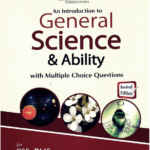Description
The Girl on the Train is a psychological thriller novel by Paula Hawkins, published in 2015. The plot revolves around themes of memory and obsession, as well as the consequences of deceit, in relation to the interconnected lives of three women. The plot was a huge commercial and critical success, with suspenseful twists in the story and great characters that held the attention of its readers, becoming a bestseller and eventually inspiring a Hollywood film.
Plot Summary :
The main storyline of the story is from the perspectives of three women: Rachel Watson, Megan Hipwell, and Anna Watson.
Rachel Watson is an alcoholic and has just been divorced by her husband, Tom. The train she travels on goes through the place where Rachel and Tom used to live. Every day while traveling to work, Rachel sees a couple who seem to be so deeply in love; Rachel has named them Jess and Jason; however, Rachel is not aware that in reality they are Megan and Damien Hipwell.
One day, staring out the window on a train, Rachel sees something that shocks her and becomes involved in an investigation to find Megan. As she becomes more and more obsessed with the couple, reality and fantasy begin to merge together-they become indistinguishable-and Rachel’s instability sets in as she tries to insert herself into the investigation.
Megan Hipwell is the second narrator, a young woman with demons. She has battled her own demons, including adultery and marriage to Damien. It is in the pages of her book that the reader discovers the facts of her life, what motivates her, and how this all relates to her disappearance.
The third narrator is Anna Watson, who is Tom’s new wife, resented at having to live in the shadow of Rachel’s presence.
Anna Watson’s point of view opens up into her strained relations with Tom and growing unease about the actions of Rachel.
Throughout the novel, it unfolds into secrets, lies, and deceit, revealing shocking revelations of all three women and those surrounding them.
2. Themes:
Obsession and Betrayal: The novel gives insight to the dangerous nature of obsession, which is specially explored in the context of Rachel’s obsessions with Megan and her life. Obsession is soon realized through betrayal: not only in the romantic relationships but also in the friendships or familial bonds.
Memory and Perception: Memory is the crux of this story. Rachel’s alcoholism has resulted in fragmented and therefore unreliable memories, making her dissuade herself from piecing together what really happened. The novel questions the reliability of memory and how perception can even distort reality.
Separation and loneliness; for each of the wives, loneliness might be said to haunt her in Rachel, after her divorce in Megan, as confined and alone in her marriage, and in Anna, who has left old for the new and can’t find security there. It is isolation that propels her toward progressively more alarming consequences.
Female Relations: The entire novel gives a critical aspect of female relations – jealousy, competition, and support. The interactive dynamics between Rachel, Megan, and Anna symbolize the serious problems of women in their identity management and relationship management with one another.
3. Character Development:
The other unreliable narrator is Rachel Watson, an alcoholic addict, carrying the emotional baggage of her divorce. Her obsession with Megan and the life she had sets most of the plot. The reader observes vulnerability and desperation for being connected in that portrayal, thus a sympathetic but flawed character.
Megan Hipwell: The character of Megan Hipwell is very complex and multi-dimensional. It portrays the conflicts of her desires and her necessities, particularly where she is alluringly moved towards finding love and fulfillment outside marriage. The chapters about Megan reveal more to the plot because readers become aware of her motives and what led her into disappearing.
Anna Watson: The confident character apparently, Anna Watson, gets defeated by the presence of Rachel in her life. Her point of view is all so tensed due to and because of which she seems vulnerable to the reader when she is confiding in insecurities regarding her family and the protection she wants for them.
4. Writing Style and Tone:
Multiple Angle View: The use of multiple first-person perspectives gives the reader a multi-angle view of the story, interlocking a layered narrative. Each voice allows suspense and intrigue to go forward throughout the novel.
Dark and Suspenseful: Overall, the nature of the book is indeed dark and suspenseful, which portrays the style and nature of the themes-those of obsession and deceit. The book’s pace constantly increases tension within it as it unfolds to a very gripping conclusion.
“The Girl on the Train” is a suspenseful psychological thriller that interweaves three women’s lives with obsession, memory, and human relationship complexity. Paula Hawkins has woven a suspenseful narrative that holds the reader’s interest at the cost of deep probes into love and betrayal’s darker corners. The novel’s use of unreliable narration coupled with the shocks leaves the reader craving for it, creating a very fulfilling read.










Reviews
There are no reviews yet.